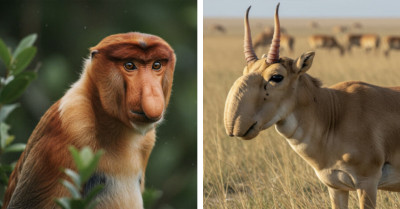Rare Rainbow Snake Spotted In The Wild After 50+ Years
Recently, a rare rainbow snake was spotted in Marion County, Florida. While this may seem like no big deal, since snakes can be found in many places in Florida if you’re looking hard enough, the rainbow snake is extremely elusive and hadn’t been seen in Marion County for over 50 years prior to this sighting.
Two women, Tracey Cauthen and her friend Rebecca Boyer, were hiking together in the Ocala National Forest, located about 47 miles north of Orlando, when they encountered the 4-foot-long snake. The two managed to capture some great photos of the beautiful snake before continuing their hike.
Cauthen shared the photos with the FWC Fish and Wildlife Research Institute. The FWC confirmed with the Florida Museum of Natural History that their sighting of this rainbow snake was the first in Marion County since 1969!
The FWC Fish and Wildlife Research Institute shared the pictures from Tracey on their Facebook page, along with the information provided by the Florida Museum of Natural History. Commenters shared pictures from their own encounters with these nonvenomous, harmless reptiles.
Keep scrolling to see the pictures of this beautiful snake, along with some interesting facts we’ve collected about this shy creature.
The Rainbow Snake is a strikingly gorgeous non-venomous snake

Here are the photos that Tracey and Rebecca snapped of the rainbow snake

A great close-up of its head

Definitely a long "critter!"
“Tracey Cauthen and I came across this gorgeous critter,” Rebecca Boyer wrote on Facebook.

The rainbow snakes are mostly a shiny black and have three thin red stripes running down their back and sides.
In the sunlight, their glossy black scales can appear iridescent blue.

On the lower sides of the body, they can be yellow or pink, and their chin and throat are yellow.

The rainbow snake is a non-venomous snake that is primarily aquatic, living in springs and rivers.
Rainbow Snake swimming in Cypress Springs located in Northwest Florida

Rainbow Snake swimming in the Wakulla River
These snakes are also referred to as "Eel Moccasin," as they primarily eat freshwater American eels. They also consume tadpoles and worms, all whole!

Commenters were quick to share their photos of their interactions with this rare snake

Look at the wittle baby 🐍

While their coloration may make them look scary, these reptiles are 100% harmless to people and pets.
If approached or cornered, they will either hold very still or move away very slowly. In the event that they're captured, the rainbow snake may release a foul-smelling musk from the glands at the base of their tail.

Of all the snakes to encounter in Florida, which is home to 44 total species, six of which are venomous, the rainbow snake would definitely be the best one to come across. They are completely harmless and do not bite, even in self-defense.
How cool do you think it would be to encounter an animal in the wild that hasn’t been seen in decades? Let us know your thoughts in the comments section below, and share this with your fellow reptile lovers!



